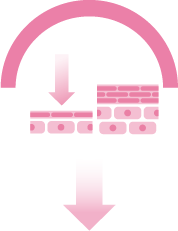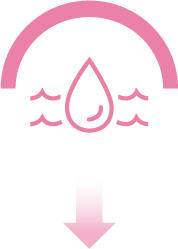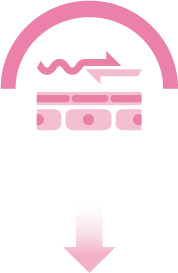Nappy rash is an uncomfortable and distressing skin condition common in babies
Approximately 50% of infants will experience nappy rash during their first year, with a peak prevalence at 9–12 months of age.1

Several factors contribute to nappy rash, but the main one is sustained exposure to urine and feces.1,2
-

The stratum corneum is thinner and weaker in babies than in adults.3
-

Prolonged wetness softens and weakens the stratum corneum.1,2,4
-

Prolonged contact with urine and feces encourages activation of enzymes that degrade skin lipids and proteins.1,2,4
-

The macerated stratum corneum is more susceptible to physical damage by friction.1,4
Leads to skin damage and inflammation characterized by a red, sore rash that can include spots and blisters.2,5
References:
1.Atherton DJ et al. Irritant diaper dermatitis: Best practice management. SelfCare 2015;6(S1):1–11. 2.Visscher MO et al. Newborn infant skin: Physiology, development and care. Clin Dermatol 2015;33:271–280. 3.Stamatas GN et al. Infant skin physiology and development during the first years of life: a review of recent findings based on in-vivo studies. Int J Cosmet Sci 2011;33:17–24. 4.Atherton DJ. A review of the pathophysiology, prevention and treatment of irritant diaper dermatitis. Curr Med Res Opin 2004;20:645–649. 5.Atherton D, Milis K. What can be done to keep babies’ skin healthy? RCM Midwives 2004;7:288–290.

